Abstract
Rats were trained to discriminate between two click frequencies. One frequency was associated with either variable-interval food reinforcement (Experiment 1) or free-operant avoidance (Experiment 2). The other frequency was associated with the absence of food in Experiment 1 and the absence of shock in Experiment 2. On a click frequency generalization test, the rats in both experiments showed positive peak shift with the shape of the relative gradients being very similar. This is the first reported instance of peak shift in rats when responding was maintained by an avoidance contingency. Nondifferentially trained controls showed that this shift was due exclusively to associative processes, with nonassociative stimulus factors in themselves apparently making no contribution to increased rates at particular stimulus values. These results show the comparability of appetitive and aversive control and support the position that gradient differences do not result from approach versus avoidance per se.
Keywords: peak shift, stimulus generalization, positive reinforcement, avoidance, bar pressing, rats
Full text
PDF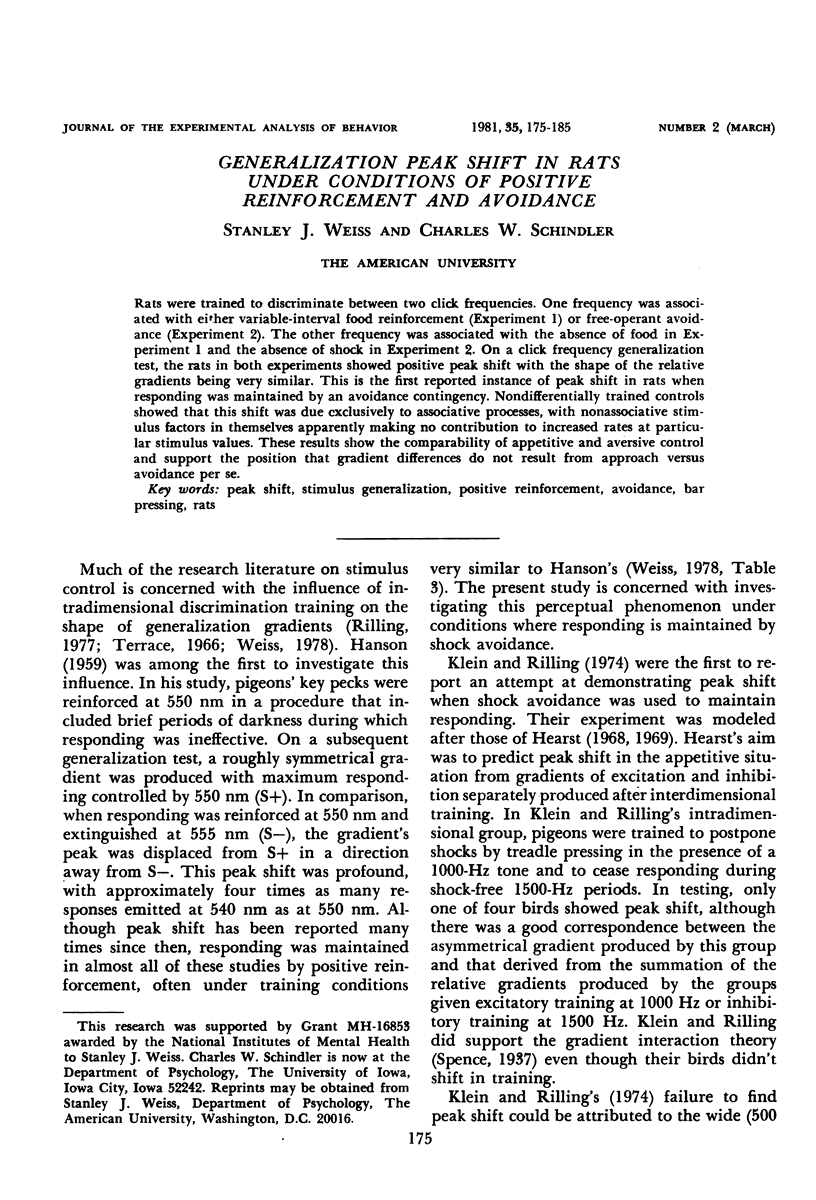
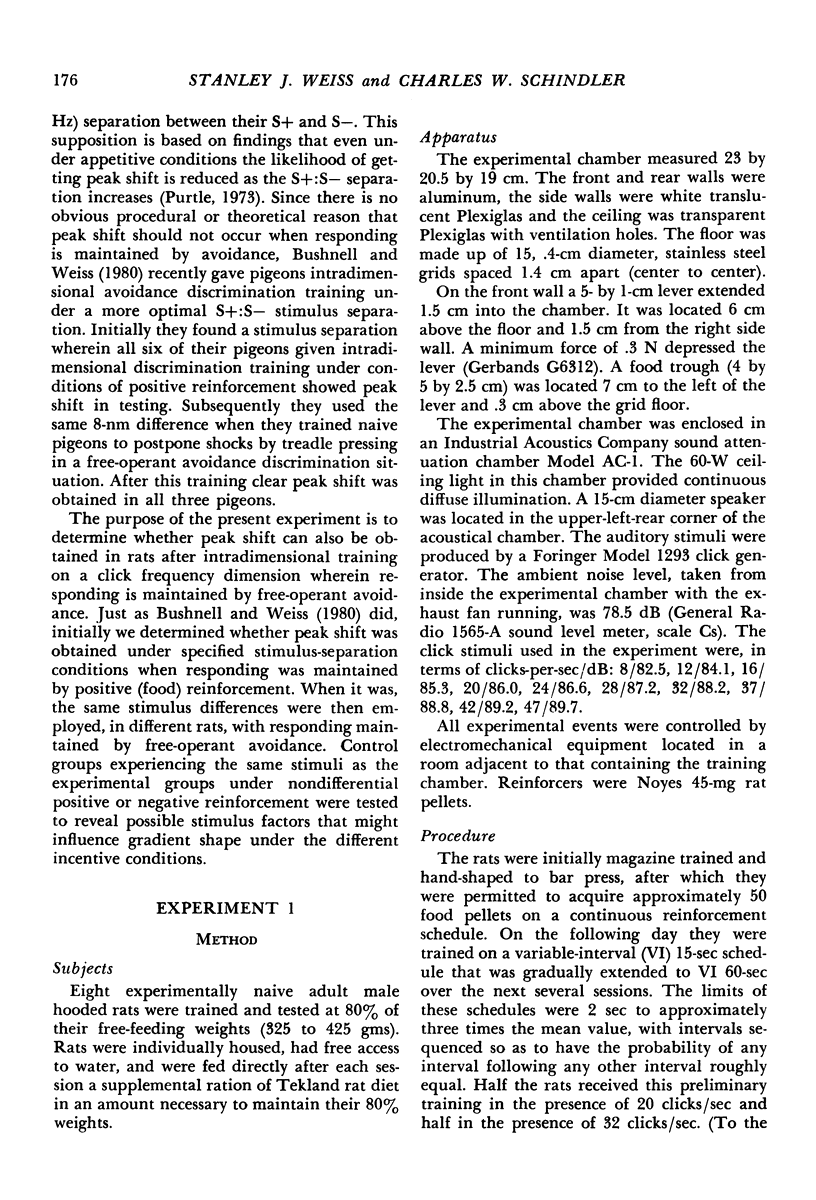
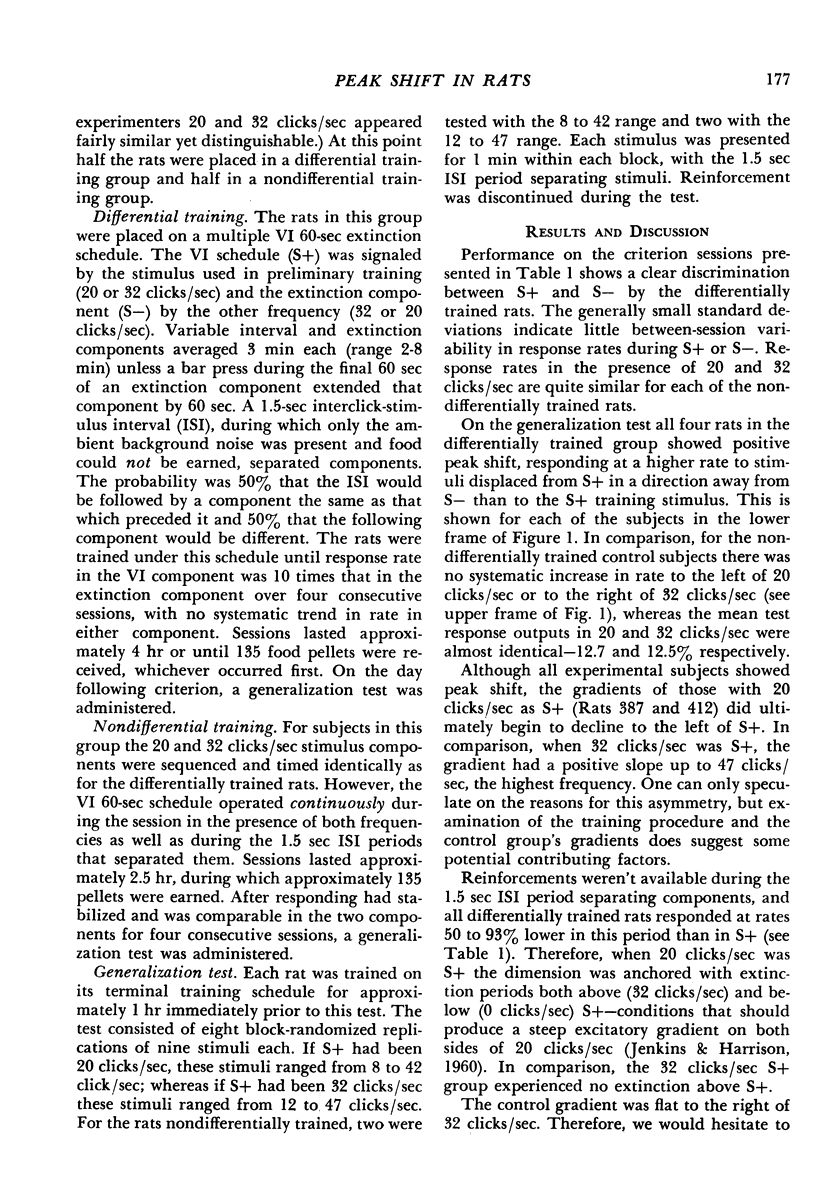

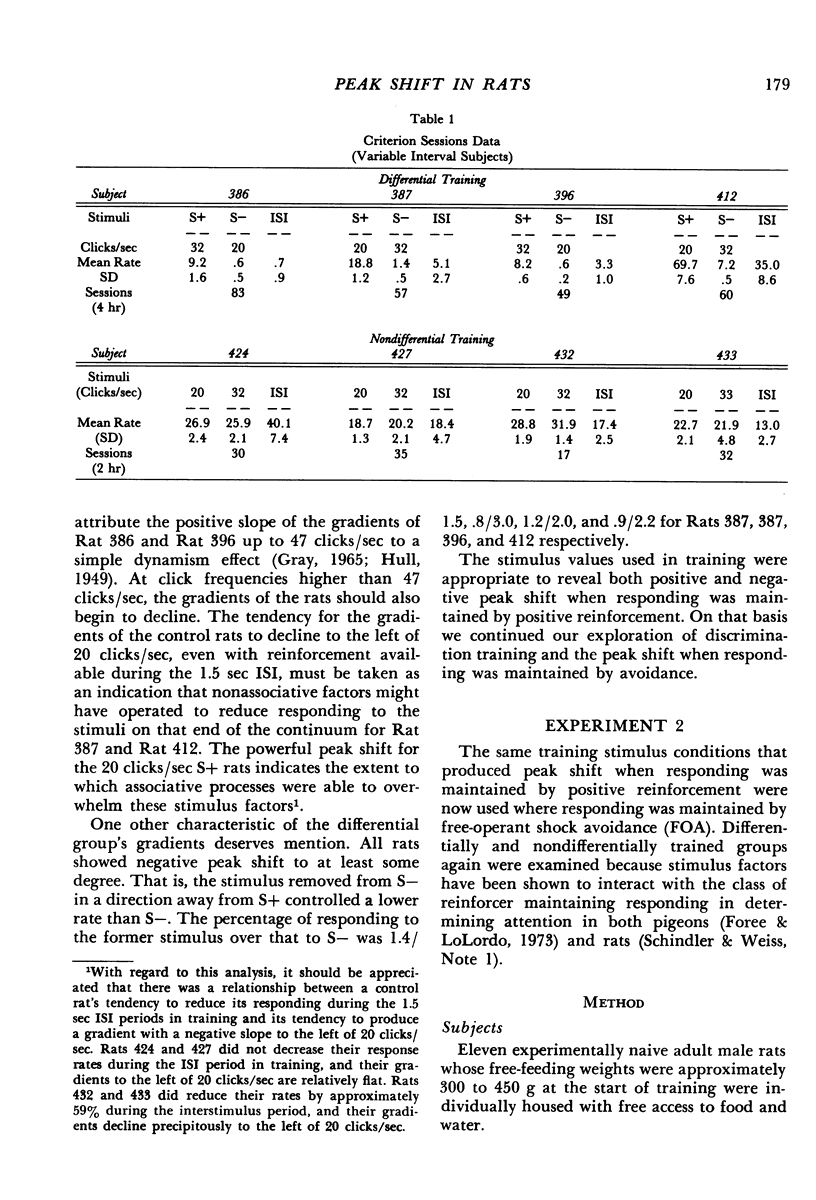
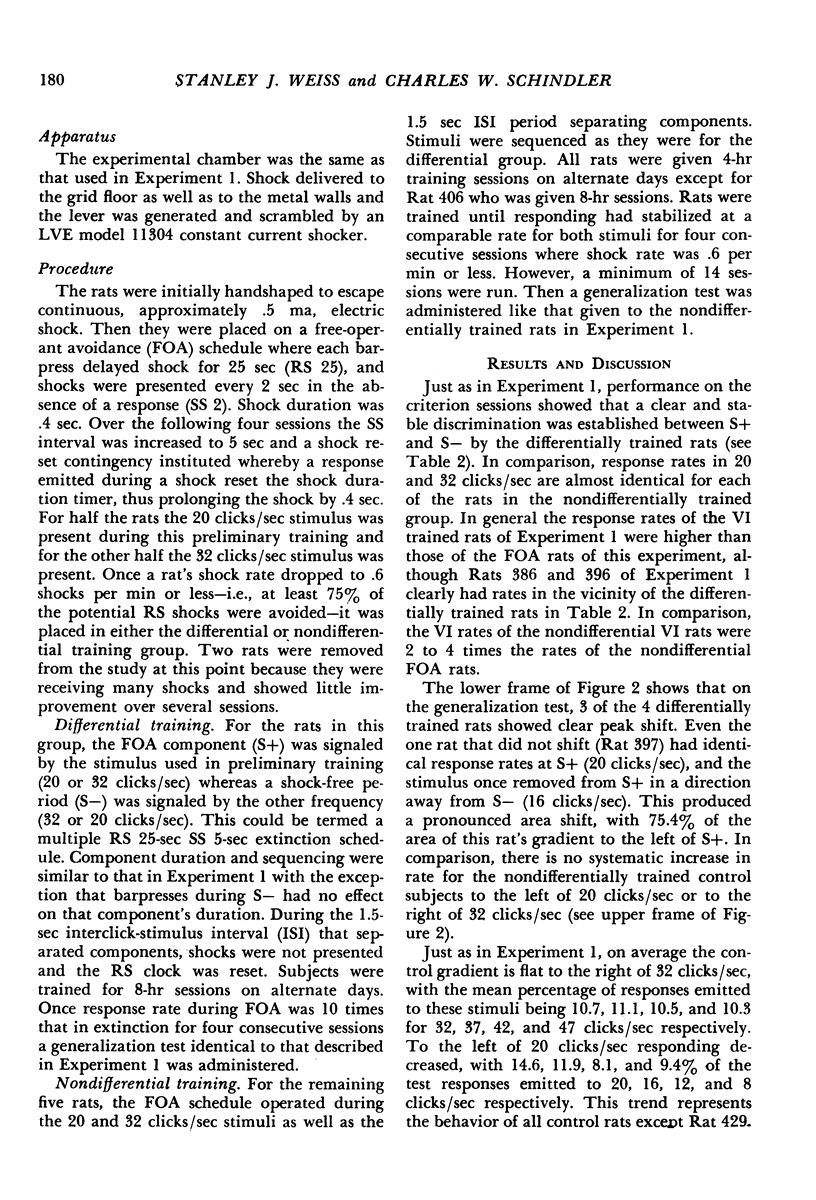
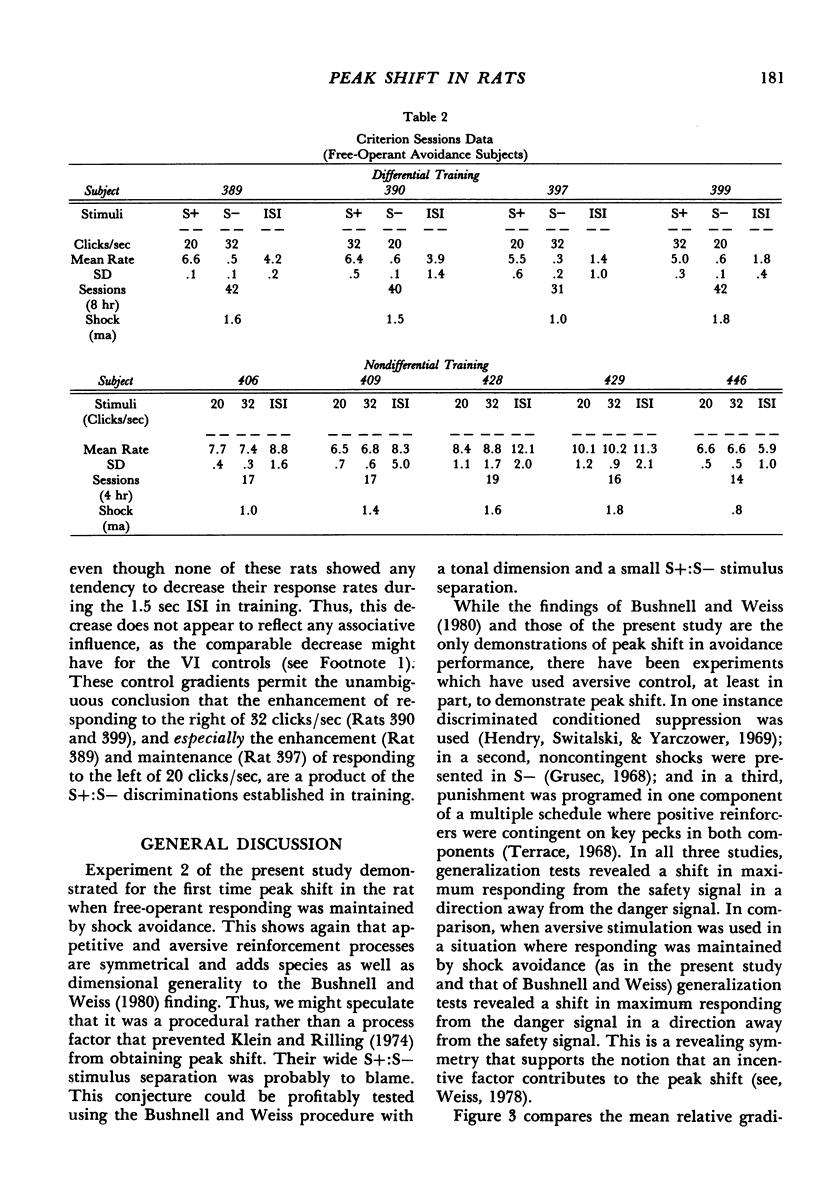
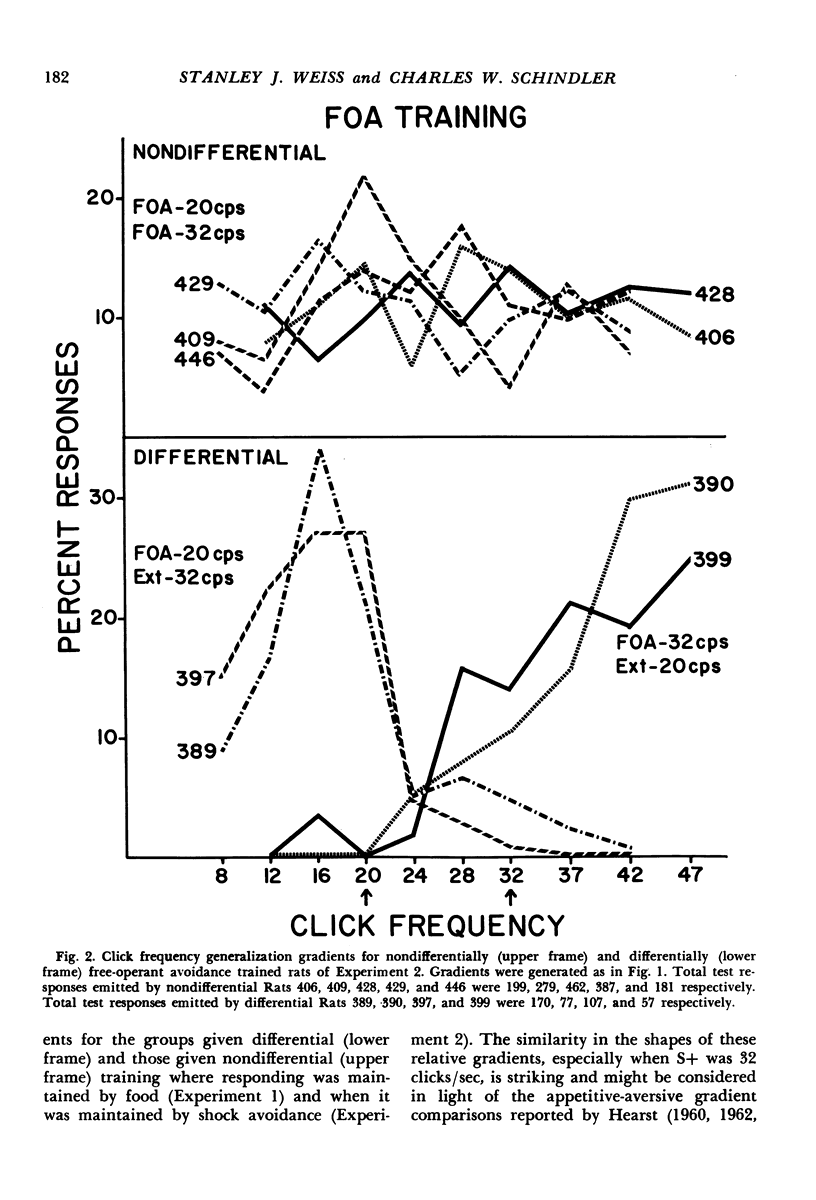
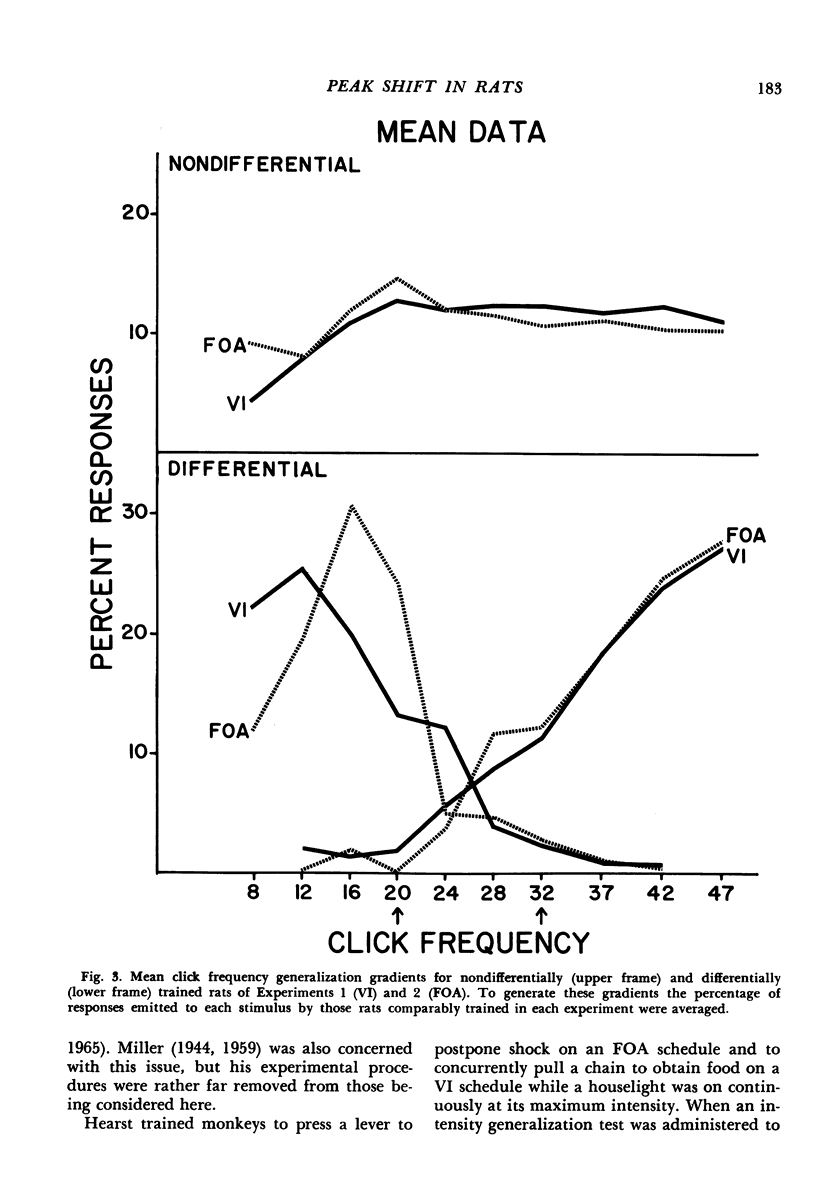

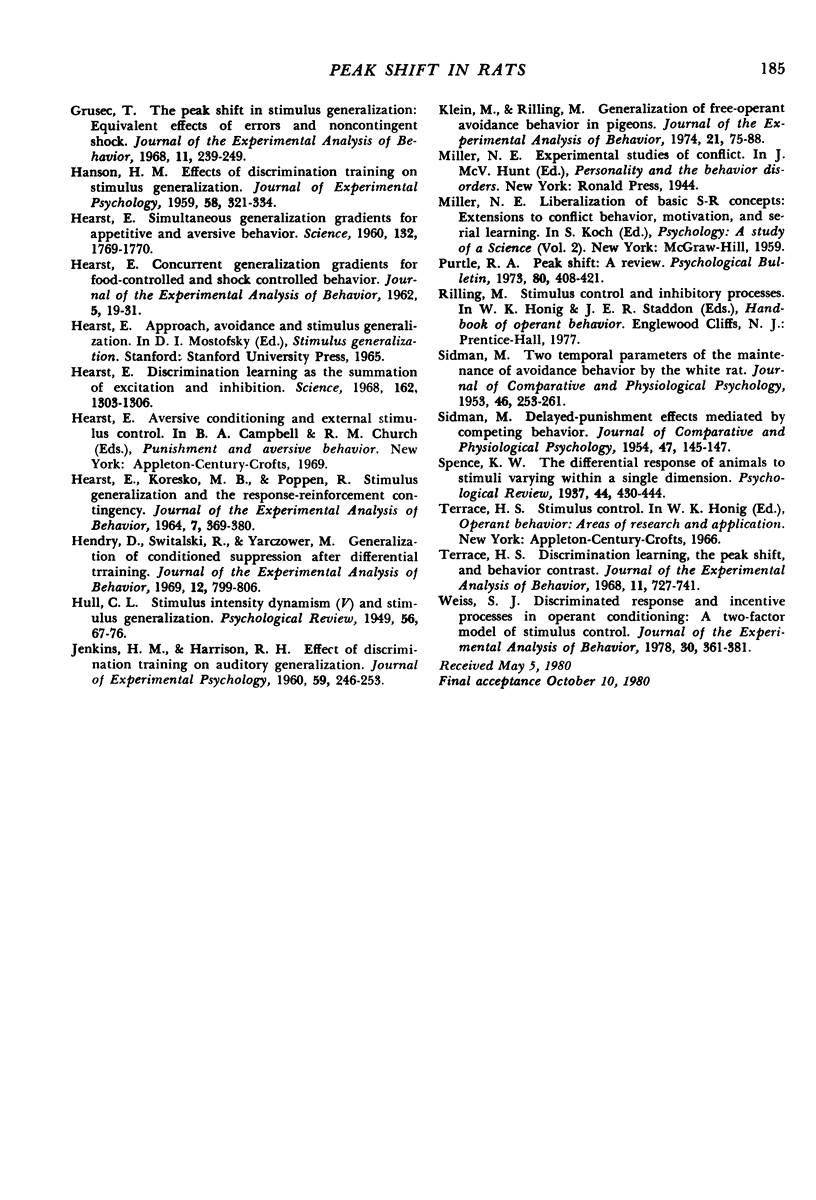
Selected References
These references are in PubMed. This may not be the complete list of references from this article.
- ANGER D. The role of temporal discriminations in the reinforcement of Sidman avoidance behavior. J Exp Anal Behav. 1963 Jul;6(3):477–506. doi: 10.1901/jeab.1963.6-s477. [DOI] [PMC free article] [PubMed] [Google Scholar]
- Bushnell M. C., Weiss S. J. An investigation of peak shift and behavioral contrast for autoshaped and operant behavior. J Exp Anal Behav. 1980 Jan;33(1):101–118. doi: 10.1901/jeab.1980.33-101. [DOI] [PMC free article] [PubMed] [Google Scholar]
- Foree D. D., LoLordo V. M. Attention in the pigeon: differential effects of food-getting versus shock-avoidance procedures. J Comp Physiol Psychol. 1973 Dec;85(3):551–558. doi: 10.1037/h0035300. [DOI] [PubMed] [Google Scholar]
- GRAY J. A. STIMULUS INTENSITY DYNAMISM. Psychol Bull. 1965 Mar;63:180–196. doi: 10.1037/h0021700. [DOI] [PubMed] [Google Scholar]
- Grusec T. The peak shift in stimulus generalization: equivalent effects of errors and noncontingent shock. J Exp Anal Behav. 1968 May;11(3):239–249. doi: 10.1901/jeab.1968.11-239. [DOI] [PMC free article] [PubMed] [Google Scholar]
- HANSON H. M. Effects of discrimination training on stimulus generalization. J Exp Psychol. 1959 Nov;58:321–334. doi: 10.1037/h0042606. [DOI] [PubMed] [Google Scholar]
- HEARST E. Concurrent generalization gradients for food-controlled and shock-controlled behavior. J Exp Anal Behav. 1962 Jan;5:19–31. doi: 10.1901/jeab.1962.5-19. [DOI] [PMC free article] [PubMed] [Google Scholar]
- HEARST E., KORESKO M. B., POPPEN R. STIMULUS GENERALIZATION AND THE RESPONSE-REINFORCEMENT CONTINGENCY. J Exp Anal Behav. 1964 Sep;7:369–380. doi: 10.1901/jeab.1964.7-369. [DOI] [PMC free article] [PubMed] [Google Scholar]
- HEARST E. Simultaneous generalization gradients for appetitive and aversive behavior. Science. 1960 Dec 9;132(3441):1769–1770. doi: 10.1126/science.132.3441.1769. [DOI] [PubMed] [Google Scholar]
- Hearst E. Discrimination learning as the summation of excitation and inhibition. Science. 1968 Dec 13;162(3859):1303–1306. doi: 10.1126/science.162.3859.1303. [DOI] [PubMed] [Google Scholar]
- Hendry D. P., Switalski R., Yarczower M. Generalization of conditioned suppression after differential training. J Exp Anal Behav. 1969 Sep;12(5):799–806. doi: 10.1901/jeab.1969.12-799. [DOI] [PMC free article] [PubMed] [Google Scholar]
- JENKINS H. M., HARRISON R. H. Effect of discrimination training on auditory generalization. J Exp Psychol. 1960 Apr;59:246–253. doi: 10.1037/h0041661. [DOI] [PubMed] [Google Scholar]
- Klein M., Rilling M. Generalization of free-operant avoidance behavior in pigeons. J Exp Anal Behav. 1974 Jan;21(1):75–88. doi: 10.1901/jeab.1974.21-75. [DOI] [PMC free article] [PubMed] [Google Scholar]
- SIDMAN M. Delayed-punishment effects mediated by competing behavior. J Comp Physiol Psychol. 1954 Apr;47(2):145–147. doi: 10.1037/h0053970. [DOI] [PubMed] [Google Scholar]
- SIDMAN M. Two temporal parameters of the maintenance of avoidance behavior by the white rat. J Comp Physiol Psychol. 1953 Aug;46(4):253–261. doi: 10.1037/h0060730. [DOI] [PubMed] [Google Scholar]
- Terrace H. S. Discrimination learning, the peak shift, and behavioral contrast. J Exp Anal Behav. 1968 Nov;11(6):727–741. doi: 10.1901/jeab.1968.11-727. [DOI] [PMC free article] [PubMed] [Google Scholar]
- Weiss S. J. Discriminated response and incentive processes in operant conditioning: a two-factor model of stimulus control. J Exp Anal Behav. 1978 Nov;30(3):361–381. doi: 10.1901/jeab.1978.30-361. [DOI] [PMC free article] [PubMed] [Google Scholar]


